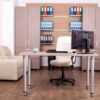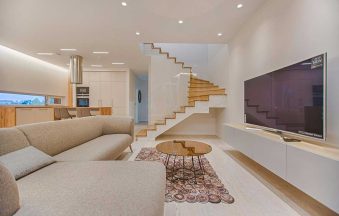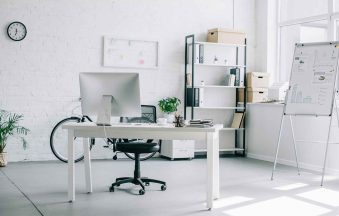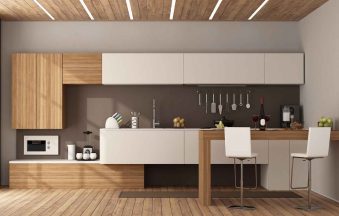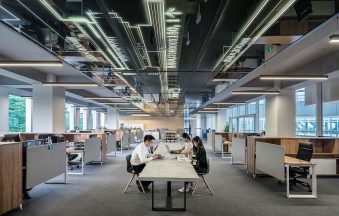Think About Buying A Decent Computer Desk Furniture
Designing a Productive Office Space
Creating an efficient and ergonomic home office setup is crucial for productivity and well-being. In an era where remote work is becoming the norm, the importance of a thoughtfully designed workspace cannot be overstated. This goes beyond merely having a table and chair; it’s about curating a space that ensures maximum efficiency while prioritising health. Firstly, choose a dedicated area in your home where you can focus on work without interruptions. This could be a spare room, a quiet corner, or even a sectioned-off part of your living space. Ensure that your office space is well-ventilated and has access to natural light. Keep this space clutter-free to foster a calm and focused environment. The idea is to create a professional setting that motivates you to be productive.
Selecting a Functional Desk
The desk is the nucleus of any office setup. Select a desk that accommodates all your essential work tools but doesn’t overwhelm the space. The ideal desk should offer enough surface area for your computer, additional screens, if necessary, and other office supplies. Consider a desk with built-in storage options to keep your workspace tidy and organised. Height-adjustable desks have gained popularity for their flexibility, allowing you to alternate between sitting and standing. This can help reduce the health risks associated with prolonged sitting. Make sure the desk height is appropriate for your chair and monitor setup, promoting a natural and comfortable posture.
Ergonomics for Better Health
Ergonomics plays a pivotal role in designing a comfortable and efficient home office. Ergonomics is the study of people’s efficiency in their working environment, and it’s essential for minimising the risk of repetitive strain injuries and other work-related health problems. When your workspace is ergonomically designed, you can work for longer periods without discomfort. Investing in ergonomic tools like keyboard supports, monitor stands, and footrests can make a significant difference. The positioning of your equipment is crucial; for instance, your monitor should be at eye level to prevent neck strain, and your keyboard should be at a height that allows your wrists to rest comfortably.
Finding the Perfect Office Chair
The office chair is arguably the most critical component of an ergonomic home office setup. A good office chair supports your lower back, promotes good posture, and helps prevent back pain. Seek out chairs that offer adjustability in height, backrest angle, and armrest positioning. Lumbar support is essential for maintaining the natural curve of your spine, reducing the risk of back pain. Mesh chairs are popular for their breathability, but some may prefer the cushioned support of upholstered options. The key is to find a chair that can adapt to your unique body shape and sitting habits.
Pain Management with Proper Seating
One of the common pitfalls of working from home is an increased incidence of back and neck pain, often stemming from improper seating. A well-designed chair offers adequate support, reducing the likelihood of strain and discomfort. Ensure your feet are flat on the floor, your knees are level with your hips, and your back is fully supported. Take regular breaks to stand, stretch, and move around. Incorporating these habits can significantly alleviate discomfort and enhance your overall well-being.
Effective Home Office Decor
Decorative elements can impact your mood and productivity levels. A well-decorated home office can inspire creativity and make the workday more enjoyable. Opt for decor that reflects your personal style but remains professional. Adding plants can improve air quality and create a calming atmosphere. Artwork, motivational quotes, and personal mementoes can add character without causing distractions. Remember to balance decoration with functionality to maintain a professional and efficient workspace.
Maximising Comfort in Your Workspace
Comfort is paramount in an effective home office. Aside from ergonomic furniture, consider the temperature, air quality, and noise levels in your workspace. Incorporate soft furnishings like a cosy rug or cushions to add a layer of comfort. Invest in good-quality headphones if you’re frequently on calls or need to block out household noise. A small fan or heater can help regulate the temperature, ensuring you stay comfortable throughout your workday.
The Role of Lighting in Comfort
Lighting is a fundamental aspect of an ergonomic home office. Natural light is ideal; it reduces eye strain and boosts mood. Position your desk near a window to make the most of natural daylight. However, it’s important to control glare, so consider using blinds or curtains. Supplement natural light with task lighting, such as a desk lamp with an adjustable arm. LED lights are energy-efficient and provide bright, even illumination. Avoid harsh overhead lights that can cause glare on screens and lead to eye strain.
Balancing Aesthetics and Practicality
While it’s tempting to prioritise aesthetics in your home office, practicality should never be compromised. An office that looks good but is uncomfortable or impractical will hold you back. Choose furniture and decor that blends both form and function. Modular office furniture can be a good investment, offering flexibility and adaptability for future needs. Ensure that everything you add to your workspace serves a purpose and enhances your productivity.
Long-term Benefits of Quality Furnishings
Investing in quality, ergonomic office furniture is an investment in your health and productivity. High-quality furnishings may come with a higher initial cost, but the long-term benefits far outweigh the expense. Ergonomic furniture can prevent common work-related health issues, increase energy levels, and boost productivity. Moreover, well-made furniture is durable, offering longevity and continued support. In the long run, this reduces the need for frequent replacements, making it a cost-effective choice. In conclusion, an ergonomic home office setup encompassing thoughtful space design, functional furniture, and health-centric ergonomics can significantly enhance your work-from-home experience. Prioritising comfort and practicality leads to a more productive and healthier work environment.










